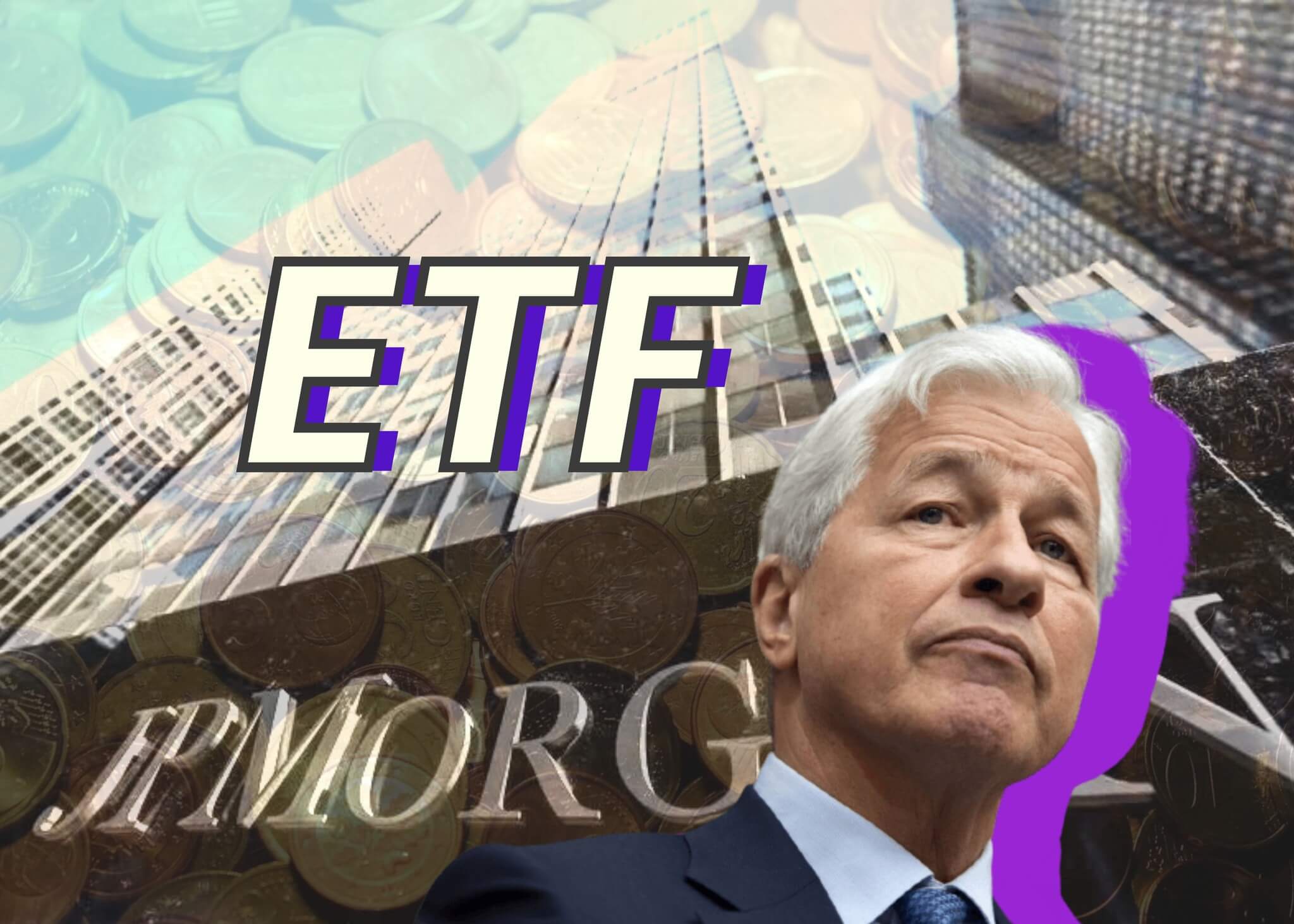
NYSEarca:EMLC J.P.M TradingNEWS EMLC Currency ETF
Exploring the intricate dynamics of emerging markets, Federal Reserve decisions, and the financial evolution of the VanEck J.P. Morgan EM Local Currency Bond ETF | That's TradingNEWS
J.P. Morgan EM Local Currency Bond ETF's Recent Performance
The J.P. Morgan EM Local Currency Bond ETF, recognized by the symbol NYSEarca:EMLC, recently witnessed its shares dip below their 200-day moving average, reaching as low as $24.79 per share. With its one-year performance showcased in the recent chart, EMLC's 52-week range touched a low at $22.38 and peaked at $26.1075. This comes against the backdrop of the bond market's rebound this year, providing investors with a sigh of relief after a historical slump. Interestingly, the resurgence of the U.S. government debt might suggest the Federal Reserve's potential pause on hiking interest rates for the rest of 2023. However, emerging markets present a lucrative opportunity for risk-tolerant fixed income investors in search of higher yields.
Spotlight on VanEck J.P. Morgan EM Local Currency Bond ETF
VanEck J.P. Morgan EM Local Currency Bond ETF (EMLC) focuses on bonds from developing economies, denominated in their local currencies. Naturally, these bonds sit higher on the risk scale than U.S. Treasuries. But it's this very risk that offers a silver lining. This year, EMLC surpassed the Bloomberg U.S. Aggregate Bond Index fourfold and boasts a 30-day SEC yield of 6.66%, a striking 250 basis points ahead of the "Agg."
Emerging Markets & EMLC's Potential
With a valuation of $3.49 billion, EMLC, which aligns with the J.P. Morgan GBI-EM Global Core Index, offers a promising consideration for fixed income ETF in the near term. A notable reason being several emerging markets' central banks, many of which are dominant in EMLC’s portfolio, showing more vigor than the Fed in hiking rates to combat inflation. The term “aggressive” is reminiscent of their early actions. Many central banks in these developing economies made their moves in 2021, contrasting with the Fed's actions last year. This proactive approach might pave the way for potential rate reductions this year, favoring EMLC.
Contrary to past instances where rate hikes in developed markets impacted emerging market economies adversely, the current scenario sees capital inflows and stronger currencies amplifying returns in local currency bonds of emerging markets. As observed by BlackRock, these emerging market central banks were not only proactive but also more intense in their efforts to quell inflation. Now, with inflation rates dwindling, certain key central banks are shifting gears towards a gradual rate reduction.
Brazil, accounting for 8.48% of EMLC’s portfolio, stands as a testament to a developing nation potentially gearing up for a rate reduction. Presently, Brazil’s benchmark SELIC rate stands at 13.75%, and the growing sentiment suggests a potential easing by the central bank to spur economic growth. BlackRock’s analysis further emphasizes Mexico for its quality and Brazil for its unparalleled income. Together, Brazil and Mexico, Latin America’s powerhouses, constitute over 14% of EMLC’s composition.
Relevance of VanEck CLO ETF in Current Financial Landscape
While bonds are witnessing a resurgence and high yields continue to entice income-focused investors, the impending rise in interest rates coupled with the looming default risk in high-yield space suggests a need for refined fixed-income strategies.
Enter the VanEck CLO ETF (NYSE Arca: CLOI). This ETF, celebrating its first anniversary last month, offers a fresh approach for fixed income investors. Managed by PineBridge Investments, CLOI offers exposure to Collateralized loan obligations (CLOs), an asset class quickly becoming a favorite among advisors and institutional investors. With its 30-day SEC yield standing at 6.30%, CLOI extends its appeal to those wary of interest rate shifts.
The Strength of Active Management in CLOI
The efficiency of active management within the bond market remains a topic of debate. Yet, certain segments, CLOs included, can greatly benefit from it, spelling promising prospects for CLOI. As William Sokol, VanEck's product management director, pointed out, CLOs are dynamic entities with a dedicated reinvestment period, allowing managers to trade loans within set guidelines. This fluidity enables them to maximize returns during stable economic periods and safeguard against potential losses during economic downturns.
A unique characteristic of CLOs is their non-fixed rate nature. This renders them less susceptible to interest rate fluctuations. With speculations of the Federal Reserve's potential rate hike in the latter part of 2023, CLOI, given its floating-rate instruments, presents a promising option for investors.
Diving Deeper into EMLC
EMLC’s Core Attributes EMLC stands as a beacon for index ETFs, focusing on local currency emerging market debt. With investments spanning multiple countries and issuers, its diversified portfolio is a mix of sovereign and quasi-sovereign entities. While the inherent risk associated with emerging markets is palpable, investment-grade sovereign issuers present minimal credit risk. However, the volatile nature of emerging market currencies presents a significant foreign currency risk. This risk was evident between early 2021 and late 2022, where a surge in rates boosted the demand for dollar assets.
EMLC's Dividend Outlook
Currently, EMLC offers a 5.1% dividend yield, surpassing many bonds and bond sub-asset classes. However, its performance remains inferior to high-yield corporate bonds and senior loans. The influence of the Federal Reserve on interest rates, especially the Federal Funds Rate, cannot be overstated. Local currency emerging market debt seems to be decoupled from the Fed rates. The divergence in behavior between securities like Chinese government debt and T-bills further strengthens this observation. Recent rate hikes by the Federal Reserve have affected foreign exchange rates more profoundly than interest rates, leading to an appreciation of the dollar.
EMLC's Financial Trajectory
The ripple effects of the Federal Reserve's increased rates were evident in 2022. There's a slight potential for further capital gains, given the dollar's current standing and the weaker performance of emerging market currencies in recent years. Yet, significant gains appear elusive.
EMLC's Exposure in the Wake of the Federal Reserve's Actions
In 2022, the financial landscape was marked by the Federal Reserve's decision to increase rates, significantly affecting various sectors, including emerging markets. The Exchange Traded Fund (ETF) symbolized by NYSEarca:EMLC didn't remain untouched by these developments. With the dollar in a dominant position, and considering the recent weaker performance of emerging market currencies, there's a noticeable potential for further capital gains for NYSEarca:EMLC. However, the prospects of significant gains remain muted.
Emerging Market Currencies: A Broader Perspective
Emerging market currencies have been through turbulent waters over the past few years. These currencies often act as a barometer for the health of their respective economies. With economic fluctuations, trade wars, and global uncertainties, they have experienced significant volatility.
When comparing these currencies to the US dollar, a stark contrast emerges. The dollar has, more often than not, maintained its supremacy, mainly buoyed by a robust US economy and policies that favor its appreciation. This dynamic has painted a challenging backdrop for emerging market currencies.
Impact on NYSEarca:EMLC and Potential Outcomes
NYSEarca:EMLC holds a significant portion of its assets in emerging market currencies. As such, any shift in the landscape of these currencies can impact the ETF's overall performance. The trajectory following the Federal Reserve's rate hikes suggests an environment where the dollar's strength could eclipse potential gains for the ETF.
However, it's worth noting that emerging markets have historically shown resilience and can offer returns, especially in a diversified portfolio context. The current scenario presents a mixed bag for NYSEarca:EMLC investors. On one hand, the stronger dollar and the rate hikes indicate a stifling environment for significant gains. On the other hand, the potential for slight capital gains still exists, given the intrinsic value and growth potential embedded within emerging markets.
The Role of the Federal Reserve and the Dollar's Current Standing
The Federal Reserve's monetary policy plays a pivotal role in shaping global financial dynamics. In 2022, its decision to hike rates has been a testament to this influence. Rate hikes typically strengthen the domestic currency, in this case, the US dollar. A strong dollar can spell challenges for emerging markets, especially those heavily reliant on dollar-denominated debt.
Given the dollar's current position of strength, emerging markets, and by extension, NYSEarca:EMLC, find themselves in a delicate balancing act. The continued dominance of the dollar, coupled with the vulnerability of emerging market currencies, creates a scenario where investors need to tread cautiously.
VanEck J.P. Morgan EM Local Currency Bond ETF (EMLC) Performance and Outlook
Current Standings
The VanEck J.P. Morgan EM Local Currency Bond ETF, listed under NYSEarca:EMLC, reported a closing price of $25.08 on August 25, an increase of 0.12% from its previous close of $25.05. However, it experienced a slight dip during trading hours, reaching a low of $24.99, which translates to a decrease of 0.36%. The ETF started the day at an opening price of $25.08.
Trading Information
With a day's trading range between $24.98 and $25.17, NYSEarca:EMLC offers investors a glance into its recent volatility. Over the past year, it fluctuated between $22.38 and $26.11. The ETF witnessed a trading volume of 918,770 shares on that day, which is below its average volume of 1,339,317 shares.
Financial Metrics NYSEarca:EMLC
has a notable net asset value of $3.53B. Its Net Asset Value (NAV) stands at $24.94. The ETF does not have a PE Ratio at the moment. However, its yield is a substantial 5.58%. One key metric to highlight is the Year-To-Date Daily Total Return, which is 6.19%. The ETF has a Beta (5Y Monthly) of 1.12, indicating its movement in relation to the market, and an expense ratio of 0.30%. It was incepted on July 22, 2010.
Portfolio Composition
Delving into its portfolio composition, NYSEarca:EMLC is heavily weighted towards bonds, accounting for 99.15% of the portfolio, while stocks represent 0.00%. A significant portion of these bonds are from the US Government, making up 98.32% of the bond holdings.
Performance Snapshot
The performance of NYSEarca:EMLC over varying time frames is as follows:
- 6.19% YTD Daily Total Return
- 9.42% 1-Year Daily Total Return
- -2.24% 3-Year Daily Total Return
In comparison to its category benchmarks, the ETF slightly underperformed in the YTD, 1-month, and 3-month metrics but has exceeded in the 1-year metric. Over a more extended period, the 5-year and 10-year returns are -0.02% and -0.75%, respectively.
Looking at the Annual Total Return history, the fund experienced downturns in 2022 (-10.59%) and 2021 (-9.72%), but saw positive returns in 2020 (3.07%), 2019 (10.42%), and 2017 (13.84%), among others.
Option Insights
For investors interested in options, there are multiple calls and puts available for NYSEarca:EMLC. For the upcoming September 15, 2023, calls include a strike at $25.00 with an implied volatility of 60.35% and another at $26.00 with 22.66%. October 20, 2023, brings options such as a call at $26.00 with an implied volatility of 3.13% and one at $27.00 with 58.06%. Moving ahead to January 19, 2024, there's a call option at $25.00 with an implied volatility of 19.95% and another at $27.00 with 29.10%.
Puts for January 19, 2024, include a strike at $20.00 with a high implied volatility of 67.87% and one at $26.00 with an even higher implied volatility of 67.63%.
NYSEarca:EMLC's Recent Dips and Peaks
The J.P. Morgan EM Local Currency Bond ETF, identifiable by the symbol NYSEarca:EMLC, has seen its shares dive below the 200-day moving average, marking a low of $24.79 per share. Over the past year, its performance varied, with the lowest share price at $22.38 and the highest at $26.1075. These shifts occur against the current bond market's recovery, possibly indicating the Federal Reserve's pause in interest rate hikes for 2023. Moreover, for those with an appetite for risk, emerging markets present an enticing opportunity in the fixed income realm.
VanEck J.P. Morgan EM Local Currency Bond ETF in Focus
Centered on bonds from developing nations and denominated in their native currencies, EMLC inherently comes with higher risk compared to U.S. Treasuries. However, this very risk has reaped rewards. EMLC outperformed the Bloomberg U.S. Aggregate Bond Index by four times this year, flaunting a 30-day SEC yield of 6.66% - a full 250 basis points over the "Agg."
Emerging Markets and the Promise of EMLC
Boasting a hefty valuation of $3.49 billion and aligned with the J.P. Morgan GBI-EM Global Core Index, EMLC emerges as an attractive fixed income ETF option. The underlying reason? Several central banks of emerging markets, which prominently feature in EMLC's portfolio, are showing more assertiveness than the Federal Reserve. They're keenly hiking rates to ward off inflation, with many making their move as early as 2021. This contrasts sharply with the Fed's moves. This aggressive stance suggests a potential shift towards rate cuts, which could benefit EMLC.
However, history has often shown rate hikes in developed nations adversely affecting emerging markets. This time, capital inflows and robust local currencies are boosting the returns on these bonds. BlackRock notes that emerging market central banks have been not only proactive but also more intense in their inflation-fighting endeavors. As inflation subsides, some major central banks seem poised for a rate reduction.
Take Brazil, for instance. Representing 8.48% of EMLC’s portfolio, the country's benchmark SELIC rate is currently 13.75%. There's a growing buzz about potential central bank interventions to foster economic growth. Furthermore, BlackRock emphasizes Mexico for its quality and Brazil for its yield, with both nations making up over 14% of EMLC’s composition.
EMLC: Diving Deep Into Its Core
At its heart, EMLC stands tall as a representative of index ETFs, spotlighting local currency emerging market debt. Its diverse portfolio, stretching across numerous countries and issuers, includes sovereign and quasi-sovereign entities. While emerging markets come with their inherent risks, the investment-grade sovereign issuers within EMLC's portfolio present minimal credit risk. Still, there's the ever-present specter of foreign currency risk, particularly evident between early 2021 and late 2022 when rate spikes elevated the demand for dollar assets.
Dividends and Financial Prospects of EMLC
EMLC currently provides a 5.1% dividend yield, outpacing numerous bonds and bond sub-asset classes. However, its overall performance lags behind high-yield corporate bonds and senior loans. The Federal Reserve's sway over interest rates, primarily the Federal Funds Rate, is pivotal. Local currency emerging market debt appears to be moving independently from these rates. The behavior gap between assets like Chinese government debt and T-bills is evident. The Federal Reserve's recent rate hikes seem to have a more profound impact on foreign exchange rates than on interest rates, leading to the U.S. dollar's appreciation.
EMLC's Position Amidst Federal Reserve Decisions
Last year, the financial world witnessed significant shifts following the Federal Reserve's choice to hike rates. These changes significantly affected multiple sectors, including emerging markets, and EMLC wasn't exempt. Given the dollar's robust position and the recent weaker performance of emerging market currencies, there exists a potential for more capital gains for NYSEarca:EMLC. Yet, hopes for significant gains seem dim.
A Glimpse into Emerging Market Currencies
Emerging market currencies have faced their fair share of challenges over recent years, serving as economic health indicators for their respective nations. With the dollar maintaining its stronghold, primarily due to a robust U.S. economy and favorable policies, emerging market currencies find themselves in a tough spot.
EMLC's Exposure and Potential Outcomes
Holding a substantial portion of its assets in emerging market currencies, EMLC's performance can pivot with the shifts in these currencies. The trajectory post the Federal Reserve's rate hikes indicates a scenario where the dollar's might could overshadow potential ETF gains. But historically, emerging markets have demonstrated resilience, especially when integrated into a diversified portfolio. The current scene for NYSEarca:EMLC investors presents a conundrum. While the reinforced dollar and rate hikes hint at a challenging environment, the potential for slight capital gains rooted in the inherent value and growth of emerging markets still lingers.
The Dynamics of Federal Reserve Decisions and the U.S. Dollar
The Federal Reserve's strategies significantly mold global financial trends. Its decision to hike rates in 2022 further underscores this influence. Rate hikes typically fortify the domestic currency – in this context, the U.S. dollar. A dominant dollar can pose hurdles for emerging markets, particularly those heavily invested in dollar-denominated debt. With the dollar's current powerful stance, emerging markets, and by extension, NYSEarca:EMLC, are walking a tightrope.
That's TradingNEWS
Read More
-
AMD Stock Price Forecast - AMD at $223: AI GPU Ramp, CES 2026 Catalysts and the Next Move for NASDAQ:AMD
03.01.2026 · TradingNEWS ArchiveStocks
-
XRP Price Forecast - XRP-USD Near $2 as Whales Add $3.6B and ETF Inflows Top $1.18B
03.01.2026 · TradingNEWS ArchiveCrypto
-
Oil Price Forecast: Oil Near $60 Weigh Venezuela Shock Against 3.8M bpd Glut
03.01.2026 · TradingNEWS ArchiveCommodities
-
Stock Market Today - Wall Street Opens 2026; Dow 48,382, S&P 6,858 on Chip Rally, Gold Boom and Bitcoin $90K
03.01.2026 · TradingNEWS ArchiveMarkets
-
GBP/USD Price Forecast - Pound Tests 1.35 as BoE Caution Meets Soft US Dollar
03.01.2026 · TradingNEWS ArchiveForex

















